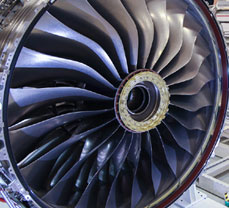
Back in 2014 we were talking about the experimental 3D printed joints being tested by the Airbus Group. The Rotite Fastener, was being tested on bicycles before being progressed into aircraft, but it was hoped that the technology could be developed and progressed into the aero industry making the attachment of electrical and mechanical components easier.
Additive manufacturing (the process of building components layer by layer) started off being used just for building prototype parts, but has now moved on to producing in flight components in the aero industry.
In March this year 3D printed parts got the go ahead from the FAA to be used in flight and as a result Boeing have used additive manufacturing to install over 20,000 non metallic 3D printed parts in their planes. They are using 3D printed parts in military and commercial aircraft.
GE are due to start printing fuel nozzles for the LEAP engine later this year. The new nozzles will replace ones that currently have 20 different parts and will be produced at a facility in Alabama. GE claim to be the first plant in the world to mass produce 3D printed aero engine parts.
July this year saw the announcement from Rolls Royce that they had produced the world’s biggest 3D printed aero component. The front bearing for a Trent XWB-97 engine was made from titanium and measured 1.5m across. The component is not made in one piece, but of 48 aerofoil shaped vane parts which were also produced using additive manufacturing. 3D printing specialists Arcam were involved and it was their electron-beam machines that were used to build the vanes.
One of the benefits of the project has been the ability to develop methods for working with large volumes of powders and understand how it can be recycled. The production of the component has allowed a much greater understanding of the use of additive manufacturing on an industrial scale. Machine variations, set ups and geometrics have all been tested as part of the process, with invaluable knowledge being picked up along the way. The ability to design and develop the part without having to fix it too early to allow for tooling times meant that manufacturing lead times could be cut too.
The engine bearing has been put through a number of tests and it is hoped that it will take to the skies in test flights later this year.
As the technology develops, so will the design processes and manufacturers will take advantage of the opportunities and benefits this will bring. The ability to integrate multiple parts into a single components, like the GE fuel nozzle mentioned earlier, being just one example.
Image: Rolls Royce
This site uses Akismet to reduce spam. Learn how your comment data is processed.


 Mail:
Mail: 




Leave a Comments